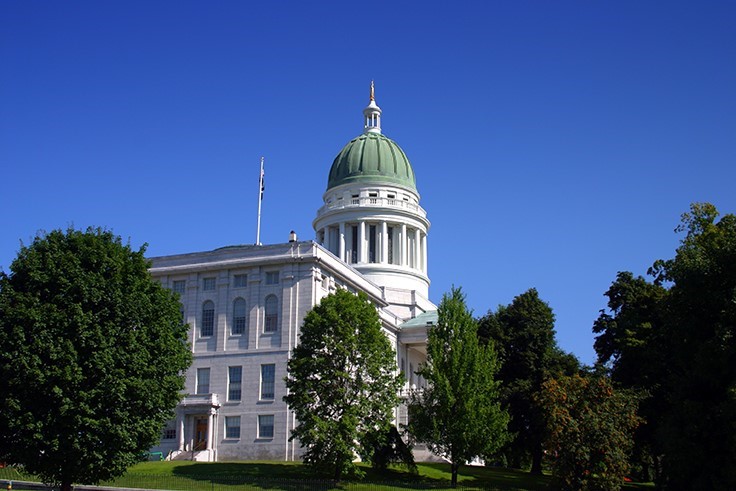Maine Prepares to Accept Adult-Use Cannabis Business License Applications
Marijuana Industry News November 6, 2019 MJ Shareholders

The U.S. Hemp Authority has released its Guidance Procedures 2.0, which aim to apply the lessons of the organization’s initial launch as a certifying body for hemp and CBD brands.
The U.S. Hemp Authority creates regulatory standards and certifies hemp and CBD businesses through third-party auditing. The organization issued its first Certified Seals to 13 companies in March, and more than 60 companies have been certified under the U.S. Hemp Authority’s Guidance Procedures 1.0.
“[When] we rolled out 1.0, … because we got it out there and we started working with it and it was very brand new, we realized that there were maybe some things that were missing from it, or that it could be a stronger program,” U.S. Hemp Authority President Marielle Weintraub told Cannabis Business Times.
RELATED: Building a Better Hemp Industry: Q&A on U.S. Hemp Authority’s Certified Seal Program
The certification program has been heavily scrutinized by the hemp industry since its launch. While some industry stakeholders saw it as a positive step forward for the nascent industry after the 2018 Farm Bill legalized hemp production in the U.S., others questioned its legitimacy.
Earlier this year, the U.S. Hemp Authority launched its Guidance Procedures 2.0, which aimed to improve upon the initial program with input from hemp industry stakeholders. The organization set up two rounds of public comment, which garnered more than 2,000 comments. A Technical Committee charged with refining the program reviewed the comments, and the U.S. Hemp Authority’s Guidance Procedures 2.0 reflect several policy changes in response to the feedback.
“What we did with 2.0 is actually tried to work with industry experts, everyday people [and] every part of the chain, from farmers to processors to brand owners, to build a much stronger program, which we have called 2.0,” Weintraub said. “There were some very specific requests that kept coming up over and over again, and those are probably the biggest changes you’ll see reflected in our guidance procedures. We wanted it to be very much consumer-facing and consumer-friendly.”
Under the new guidelines, processors, manufacturers and brand owners must comply with all relevant FDA regulations for foods, beverages, cosmetics and dietary supplements. The program now prohibits genetically-engineered hemp, and any genetically-engineered non-hemp ingredients must be identified on the product label.
“We seem to have a lot of terminology and we don’t seem to have a lot of strict understanding of what that terminology means,” Weintraub said. “What we did roll out in 2.0 was a much larger and in-depth glossary. In that glossary, we did define ‘broad-spectrum,’ ‘full-spectrum’ and ‘isolate.’ We will expect people who are using those terms on their label to be following those definitions.”
The country of origin of the hemp biomass must also be included on product labels under the organization’s new guidance, and synthetic and biosynthetic cannabinoids are prohibited.
“The idea is just to be more transparent and give the consumer the power to pick the product that’s right for them,” Weintraub said.
The U.S. Hemp Authority has worked with Validus, its third-party certifying agent that audits companies seeking a Certified Seal, to update and re-educate the auditors to ensure they are auditing for the new guidelines. Overall, it will be a much more in-depth audit, Weintraub said, but the organization has also worked to lower its cost for farmers.
“We wanted to make sure our certification program was more accessible to farmers, so we did slash prices and costs of licensing for farmers,” she said.
The Guidance Procedures 2.0 officially take effect Jan. 1 to allow time for both the auditors and those interested in certification to make the transition, Weintraub said.
“We want to make sure people have enough time,” she said. “Changing labels is hard. Changing ingredients on labels is hard. So, we wanted to make sure people had enough time to catch up with these changes and that the early adopters of the Seal were not negatively affected for being an early adopter.”
Companies that have already received Certified Seals will have six months to undergo a new audit and become re-certified, Weintraub said. Any new companies seeking certification will be audited to 2.0 standards starting Jan. 1.
So far, industry reception has been warm, Weintraub added. “[Reactions have] been very, very positive. We even got some great kudos from the American Herbal Products Association, who took a stance against us in the beginning just because they believed that the code of federal regulations wasn’t strong enough in 1.0. We basically upped the ante and we decided to make sure that, while we are wanting people to follow the U.S. Hemp Authority’s guidelines, what we wanted to do first [was ensure] that we aren’t passing on any of the federal regulations available to us.”
For example, after the U.S. Department of Agriculture (USDA) released its interim hemp regulations last week, the U.S. Hemp Authority incorporated the rules as a note in its 2.0 guidance, reserving the right to add those regulations into its program as soon as they are finalized, Weintraub said.
“This has always been set up to be an annual audit, and it’s because of how quickly this industry is changing and how flexible we need to be in order to evolve alongside it,” she said. “We also reserve the right to add regulations if very strict ones roll out that we expect everyone to follow. But the goal has always been to be an easy way to identify safe, legal and trusted products so that consumers know that what they’re buying is real.”
MJ Shareholders
MJShareholders.com is the largest dedicated financial network and leading corporate communications firm serving the legal cannabis industry. Our network aims to connect public marijuana companies with these focused cannabis audiences across the US and Canada that are critical for growth: Short and long term cannabis investors Active funding sources Mainstream media Business leaders Cannabis consumers









